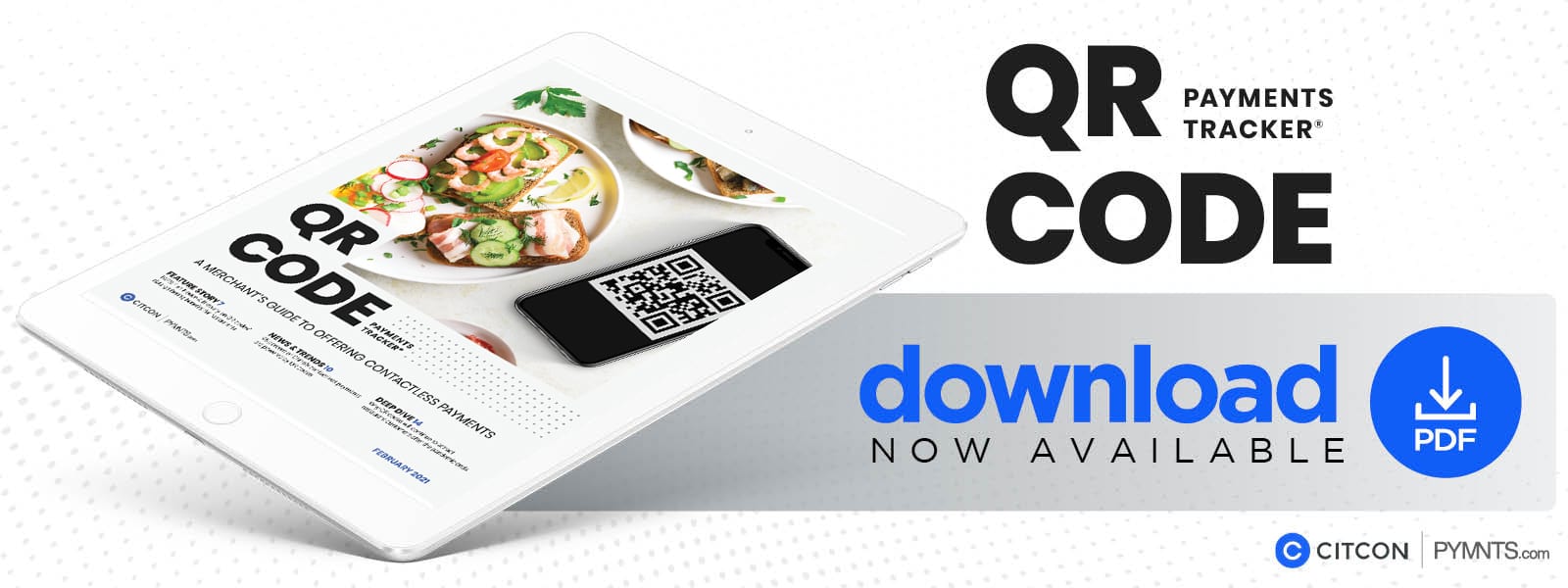TAPS Fish House & Brewery On QR Codes’ Data-Gathering Benefits For Restaurants

Use of QR codes has not only helped restaurants offer a contactless ordering and payments experience, but they are also unlocking another advantage: customer loyalty. In this month’s QR Code Payments Tracker, PYMNTS talked with Kerri LaTorre and Tom Hope of TAPS Fish House & Brewery about how data collected from customers’ use of QR codes can drive targeted messaging and encourage repeat orders.
Last year was one of the most difficult on record for the U.S. restaurant industry, as independent eateries and chains of all sizes struggled with social distancing guidelines, stay-at-home orders and the worst economic downturn since 2008.
More than 100,000 restaurants temporarily or permanently closed by the end of 2020, and the National Restaurant Association reported that 40 percent of restaurant operators were unsure whether they would survive until March of this year.
These challenging times have called for new and innovative solutions to safely attract customers, and QR codes have been a lifesaver for many restaurants. The technology allows customers to view menus, order food and make payments while only minimally interacting with staff members.
One chain leveraging QR codes is TAPS Fish House & Brewery, a three-location chain in Southern California owned by restaurant holding group Tableside Partners. Ever-changing government regulations forced TAPS, like many restaurants, to navigate some changes at the start of the pandemic, but the chain ultimately settled on using QR codes to safely and efficiently enable in-house dining.
“[Regulations] restricted indoor dining first, then we were just outdoor dining, and then half of our locations closed down, with the other half of our locations remaining open [and offering] takeout online,” said Tom Hope, Tableside Partners’ vice president of Operations. “But as soon as the pandemic hit, we pivoted pretty fast and created contactless payment options almost immediately.”
PYMNTS talked with Hope and with Kerri LaTorre, TAPS Fish House & Brewery’s director of Service, about how the chain instituted QR code-enabled payments and the benefits this system has delivered during the pandemic and will continue to deliver once it has passed.
Challenges And Benefits Of Deploying QR Codes During The Pandemic
Implementing QR code-enabled menus and payments is relatively straightforward for restaurants, but there can be technical hurdles to clear, especially for smaller eateries without full-time IT staff. TAPS, for example, initially confronted QR coding issues that caused some friction among staff.
“There was an inconsistency in the very beginning, and it had to do … with the code writing, where there [was] a bit of a hiccup,” LaTorre said. “That instantly deterred some of our staff members from trusting that it was going to work, and on the management operation side, the troubleshooting was new to us. I don’t think that there was enough information [initially] that gave us the steps on how to troubleshoot those QR payment challenges that we were having.”
TAPS immediately began reaping the benefits of QR code-enabled payments once these hiccups were resolved, however. Customers were able to view menus and make payments on their mobile devices and also access numerous other experiences.
“We used QR codes for a waitlist application that we have that people can scan from their cars as soon as they pull up in front, and then it notifies you when your table’s ready,” Hope said. “We also put together a QR code that, when you scan it on the menu, it brings you right to an experience where you get to meet the captain of the ship that caught the scallops, for example. [It] tells you where they’re from.”
Customers’ reactions to these QR code innovations have been largely positive, LaTorre noted. Another benefit to deploying them comes from their data-gathering capabilities, as the restaurant can take in data for insights to drive greater customer engagement.
How QR Codes Can Shape The Restaurant Industry’s Future
QR codes are quickly becoming table stakes in the restaurant industry, meaning eateries will soon need to step up their games to stand out. One way to achieve this hinges on further leveraging the codes to access valuable customer data, an approach that TAPS has embraced to drive customer loyalty.
“There’s options and opportunities for us for data collection during that QR process,” LaTorre said. “It’s just asking how they would like a receipt retrieved for them, and in that process we either get an email address or a cellphone number that’s recorded in our [point-of-sale (POS)] system for data collection. They’re opting in so that we can [send] communications to them.”
QR codes could also prove their worth once the pandemic ends by providing valuable channels for customer comments and reviews. They can be synced up with loyalty outreach efforts to create positive feedback loops that drive further in-store traffic.
“We have QR codes that are linked within our communication platforms where staff or guests can give feedback or reviews of our business,” LaTorre noted. “We’re also looking at using certain codes in our training manuals and training programs that then will take our staff to YouTube videos for training and education.”
QR code-powered menus and payment options are becoming commonplace at restaurants, yet these use cases are just the tip of the iceberg for the industry. Eateries that optimize and diversify their QR code solutions now stand to reap a slew of benefits once the health crisis has passed.
